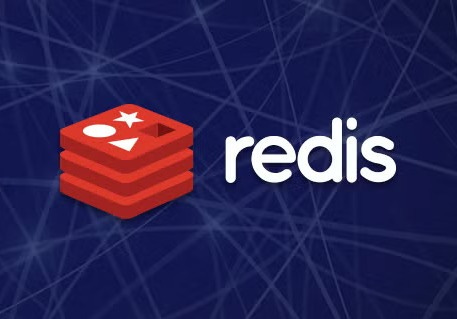Redis returns to open source
Elastic also switched back last year
In issue #15 of Forkable, I look at Redis reversing course similar to Elastic before it, by adopting an open source license once more.
Elsewhere, COSS Corner profiles a young open source startup called LanceDB, which is setting out to create one of the most important open source projects of the next decade.
And in Patch Notes, I summarize all the key happenings in the world of open source.
As usual, feel free to reach out to me with any questions, tips, or suggestions: forkable[at]pm.me.
Paul
Open issue
The return of Redis open source
Countless open source companies have switched to proprietary licensing through the years — so many, in fact, it’s hard to keep count.
However, we could be at the start of an unusual trend that is seeing companies reverse course. Last year, Elastic — creator of enterprise search and data retrieval engine Elasticsearch — revealed it was going open source once more, some four years after switching to a duo of “source available” licenses.
Now it’s the turn of Redis, developer of the in-memory key value store used for caching and real-time analytics, to realign itself with the open source realm.
In March last year, Redis CEO Rowan Trollope announced it was adopting a dual source available licensing approach (the Redis Source Available License and Server Side Public License) — much like Elastic before it. The reason given was a familiar one: to stop the cloud hyperscalers from selling managed services off the back of the Redis open source project.
“The majority of Redis’ commercial sales are channeled through the largest cloud service providers, who commoditize Redis’ investments and its open source community,” Trollope wrote at the time.

As expected, a hyperscaler-backed fork followed in the form of Valkey, which included the support of AWS, Google, and Oracle, not to mention companies such as Ericsson and Snap.
Now, with the launch of Redis 8 this week, Redis is once again making its core product available under an open source license. Rather than the permissive BSD license it used before, however, Redis has plumped for the copyleft AGPL license (similar to Elastic before it).
The core reason for this backtrack, perhaps predictably, is that the license change damaged Redis’ relationship with the community.
“After I joined the company [in February, 2023], and a year of evaluating alternatives, in March 2024, we decided to move Redis to the SSPL license,” Trollope wrote in a blog post this week. “This achieved our goal — AWS and Google now maintain their own fork — but the change hurt our relationship with the Redis community. SSPL is not truly open source because the Open Source Initiative clarified it lacks the requisites to be an OSI-approved license.”
But another key reason, it seems, stems from Redis creator Salvatore Sanfilippo, who rejoined Redis as developer evangelist back in November.
“Collaborating with Salvatore on new capabilities, company strategy and community engagement has been a true privilege that has made a major impact that will pay dividends into the future,” Trollope said.
And this will be a big focus for Redis moving forward with Redis 8: “Improving community engagement, particularly with client ecosystem contributions,” Trollope wrote. “Redis 8 with its new capabilities and with AGPL licensing demonstrates our ongoing commitment to making a platform developers love, while advancing Redis according to Salvatore’s original vision.”
COSS Corner
LanceDB leans on open source to build a database for multimodal AI
In this week’s COSS Corner, I chatted with Chang She, co-founder and CEO of LanceDB, a company that’s building a “database for multimodal AI.”
The LanceDB founding team are long-established in the open source community. She is one of the original authors of Pandas, an open source data analysis and manipulation library for Python. And co-founder and CTO Lei Xu is a committer to Apache Hadoop and sits on the project management committe.
LanceDB, in a nutshell, is a vector database built atop Lance, an open source columnar data format designed for multimodal data and machine learning — 100 times faster than Apache Parquet, She explained to me in an interview last month.
While LanceDB itself has already attracted customers such as Midjourney, the Lance data format has also seen uptake by big-name businesses such as TikTok-owner ByteDance, which is using Lance for its cloud computing and AI unit Volcano Engine.
And this gets to the thrust of why LanceDB is pursuing an open source approach — it wants Lance to become the standard data format for AI applications in the same way that Parquet has for BI and analytical data, or Apache Arrow has for in-memory data.
“Our team is stacked with core contributors from some of the most important open source data projects from the last decade,” She said. “And we’re hoping that Lance will become one of the most important open source projects for the next decade — if we want it to be a data standard, it has to be open source.”
Read more: LanceDB leans on open source to build a database for multimodal AI
Patch notes
Open Source Lab seeks funding
Oregon State University’s Open Source Lab (OSL) provides hosting for some 500 open source projects, such as Drupal, Debian, Fedora, GNOME, Alpine Linux, and more. But the OSL is in trouble — Lance Albertson, director of the lab, said this week that due to a decline in corporate donations, it has been operating at a deficit for the past few years.
The Oregon State College of Engineering has been filling that funding gap, but that funding will be coming to an end, placing the OSL’s future in jeopardy. Additionally, Albertson says that the university is planning to deprecate the data center where the lab’s hosting is currently located.
“Earlier this week, I was informed that unless we secure $250,000 in committed funds, the OSL will be forced to shut down later this year,” Albertson wrote.
Suffice it to say, the lab is seeking more donations, with potential funders requested to email before May 14, 2025 at: donations@osuosl.org.
H shops locally for open source
H, the French AI startup that raised a chunky $220 million seed round last year, has reportedly acquired Mithril Security — a French open source startup that helps companies use AI models securely, with data privacy and regulatory compliance in mind.
As per a report in Sifted, the acquisition closed in the second half of 2024, with Mithril Security founder Daniel Huynh initially joining H before leaving the company.
UN ditches Google for CryptPad
As I reported in Forkable last month, the United Nations (UN) embraced open source with the publication of eight open source principles, designed to provide a framework “to guide the use, development and sharing of open source software” across the UN globally.
This effort also includes ditching Big Tech and switching to open source tooling. By way of example, to collect endorsements for its open source principles, the UN switched from Google Forms to CryptPad, an open source, privacy-centric collaboration software suite that includes CryptPad Form.
Xiaomi joins the open source AI party
It’s no secret that China is betting big on open source AI, and Chinese smartphone giant Xiaomi is now firmly on board with the launch of its first large language model (LLM) this week.
The open source “MiMo” reasoning model arrived in the same week as Alibaba debuted Qwen3, a family of open source ‘hybrid’ AI reasoning models.
ByteDance joins OpenSearch Foundation as ‘general member’
The OpenSearch Foundation, home to the AWS-led ElasticSearch fork OpenSearch, has four new members — including ByteDance. TikTok’s parent is joined by DataStax, DTEX, and Seacom as “general members,” a tier below the premier membership which counts AWS, Uber, and SAP as members.


